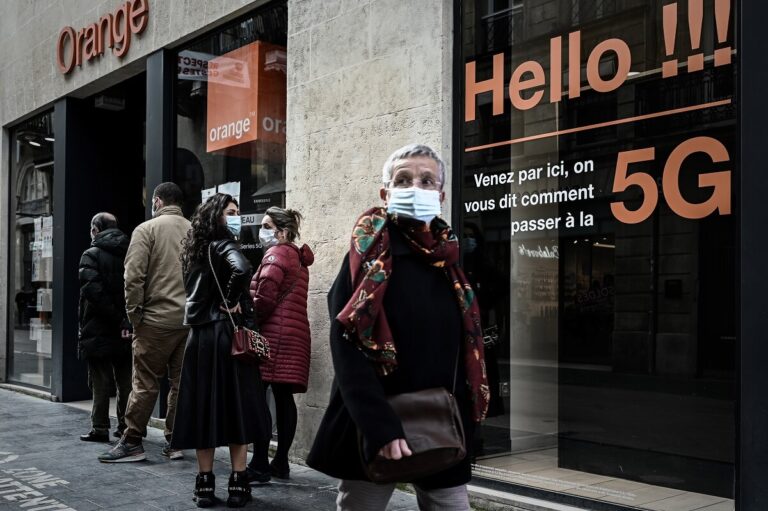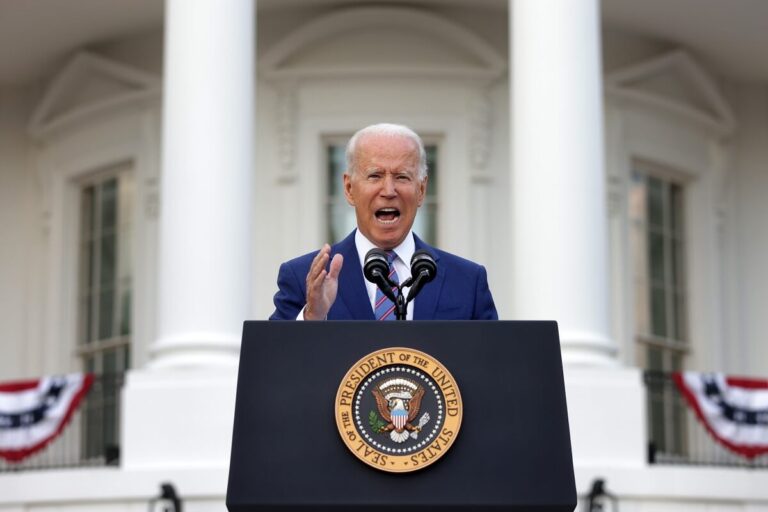The technology advancements of the last decade have transformed the competition between the US and China into a dispute concerning the control over global Internet infrastructure. As the geopolitics surrounding the 5G rollout intensify, technologically developing Eastern Europe has become a centre of the conflict. The Sino-American struggle over 5G networks in the region places Eastern European countries in a difficult position both in terms of geopolitical loyalties and technological and economic development.
Geopolitics of the 21st Century: The 5G Race
The traditional understanding of geopolitical competition defined by the control over natural resources and territories has been blurring as the significance of technologies like 5G increases.[1] The fifth-generation technology, popularly known as 5G, represents the upgrading of mobile, telecom and internet infrastructure from the existing 4G.[2] This upgrade promises to deliver highly responsive networks and faster wireless services[3] that could reinvent the business world by improving cost effectiveness and increasing productivity.[4] Yet this advancement involves a range of challenges since 5G networks will be considerably more complex than current networks due to their increased density.[5]
On a geopolitical level by becoming 5G providers states may interfere in client state’s data traffic thereby gaining control over its unencrypted content.[6] Consequently, as the determining critical information infrastructure of the next decade, the 5G rollout has been embedded in a range of controversies[7] as states compete to gain dominance over the construction of said networks.[8]
- Read also: Artificial Intelligence on the Battlefield
These conflicts have mainly emerged from the Chinese multinational technology company Huawei and the head of the previous 4G rollout: the US government. China’s notoriety for industrial espionage[9] has led to concerns regarding Huawei’s potential ties to the Chinese intelligence services.[10] According to US authorities, Huawei, which translates into “China with achievements” in Mandarin[11], is legally obliged to execute intelligence work for the Chinese government.[12] This accusation was reinforced by the fact that the founder of the company, Ren Zhengfrei, was found to be a former engineer for the People’s Liberation Army and a member of the communist party.[13] Huawei’s involvement in the 5G rollout is therefore believed to carry significant security implications such as the risk of the Chinese government tracking critics, gathering intelligence and stealing intellectual property.[14]

The US government, which has been the leading voice in the anti-Huawei movement, has already banned the company from its domestic market.[15] The governments of Japan, Australia, New Zealand[16], and Sweden[17] have followed its example. Nonetheless, as Huawei tries to penetrate the European market the US’ anti-Huawei campaign follows.[18] As a consequence Europe, Eastern Europe specifically, has become a centre of the Sino-American digital conflict.
Eastern Europe: Huawei vs. the US
The lack of a common 5G deployment within the European Union[19] has led to the contracting of different 5G providers across member states as well as to substantial gaps in the 5G infrastructure development between Western and Eastern Europe.[20] According to the 5G Readiness Index, the latter has fallen substantially behind. [21] As a consequence, Eastern Europe has become both the centre of Huawei’s expansion efforts and the focus of the US’ 5G security initiative “clean network”[22] aimed to secure the networks from “untrusted vendors”[23]. Eastern Europe thus finds itself divided between the US and China.
Supporters of the American anti-Huawei movement include states like Poland and Romania which view the US as a primary security provider.[24] Romania has adopted the harshest position towards the Chinese 5G provider.[25] In a joint statement in 2019, Romania and the US stated their mistrust towards Huawei based on an alleged case of espionage.[26] Despite the tech company’s denial of this accusation, Romanian President Klaus Iohannis proceeded to introduce a bill to effectively ban Huawei from taking part in 5G development in the country.[27] Romania has not been the only Eastern European state to take legal action against the company. Poland has operated along similar lines after two secret service agents and an ex-employee of Huawei were arrested over espionage charges in January 2019.[28]
However, regardless of the US’ conviction, there have been several critical voices questioning the US’ representation of Huawei as a security threat. Firstly, it must be noted that Huawei is not a state-owned but a private company[29]. Secondly, as indicated by Qing Wang, professor of Innovation at the University of Warwick, affiliations to the People’s Liberation Army are common among people from the Chinese countryside like Zhengfrei since they represent a means to escape poverty.[30] Likewise, to date, there has been no public indication that demonstrates technical vulnerabilities within Huawei networks.[31] As a consequence, Eastern European states like Hungary have not shared Romania’s and Poland’s mistrust towards Huawei. In fact, the Orbán government recently announced the opening of the Huawei Research and Development Center in Budapest.[32]
Viewing these conflicting positions countries like Serbia find themselves in a ‘though spot’ with respect to the decision of either joining the US’ clean network initiative or entering a contract with Huawei.[33] Although the division in Eastern European countries’ stances towards Huawei can be interpreted through the lens of geopolitical loyalties, the economic implications of 5G must not be disregarded.[34] In effect, consideration for the economic implications of 5G is necessary to fully capture the security dilemma posed by the 5G race.
The Digital Security Dilemma
As stated before, the evidence in support and opposition to Huawei’s connection to the Chinese government have led to differing security assessments. A report by NATO’s Cooperative Cyber Defence Centre of Excellence (CCDCOE) provides clarity. It has found that despite the lack of public evidence to support the claim of technological vulnerabilities within Huawei equipment, “it is fundamentally impossible to rule out potential technology flaws that can be exploited in the future”.[35] Huawei’s 5G networks can thus not be disregarded as a potential security threat. On the surface, it may thus appear “evident” which position Eastern European countries must assume in regard to Huawei.
However, one must not forget the beforementioned technological advancement and economic benefits of 5G networks[36] which would bring reliable connectivity, infrastructure, and new services to the countries.[37] Additionally, despite Washington’s support in the implementation of anti-Huawei bills, the US government effectively fails to offer a competitive alternative.[38] Although banning Huawei may mean minimizing cybersecurity risks, it also comes at a great economic cost to the region, one that some countries like Hungary are unwilling to take. Huawei published that, based on Oxford Economics predictions, banning the company from the 5G rollout could raise the cost for countries by 8-30% in a decade.[39]
The 5G race has not only placed Eastern European countries in a difficult position regarding their geopolitical loyalties but has also prompted the dilemma of whether the increasing security risks involved in technological development are justified for the sake of economic growth.
As technology defines the future, Internet infrastructure providers have moved from being a mere technological choice to becomeing a substantial security concern. The conflict between the Chinese technology company Huawei and the US government over the 5G rollout in Eastern Europe makes evidence of this shift in geopolitics. Eastern Europe, aiming to catch up with its Western neighbours in the field of 5G infrastructure, has found itself divided between entering a contract with Huawei or joining the American clean network initiative. Although the US’ accusations cannot be argued to be completely grounded, the potential security risk posed by Huawei must not be disregarded. YNevertheless, cybersecurity represents only one dimension to Eastern European countries’ struggle to position themselves in respect to the dispute. The long-term economic benefits of 5G rollout and the accessibility of Huawei’s services have placed the countries in a security dilemma in which technological development and economic growth must be weight against national security.
Author: Aitana Garcia Domingo is a final year student of the faculty of Politics and International Studies at the University of Warwick in Coventry, England. She specializes in international security and European public policy. Her main areas of interest include: gender and conflict, modern history, human rights and international security. Given her specialization in European public policy, she is currently working as a public sector consulting intern for Everis Spain’s international organizations team. She is also a Policy Analysis Intern at Warsaw Institute.
This article was written as part of the statutory activities of the Polish think tank Warsaw Institute. If you appreciate the content prepared by our partner, we appeal to you for financial support for this non-profit organisation.
More information:
www.warsawinstitute.org/support/
[1] Gökhan Tekir, “Huawei, Networks, and Digital Geopolitics”, International Journal of Politics and Security, 4 (2020), p.112-113
[2] Min Tang, “Huawei Versus the United States? The Geopolitics of Extraterritorial Internet Infrastructure”, Internet Journal of Communication, 14 (2020), p.4565.
[3] Marguerite Reardon, “5G will change the world. China wants to lead the way”, Cnet, 10.July.2020.<https://www.cnet.com/tech/mobile/5g-will-change-the-world-and-china-wants-to-lead-the-way/>
[4] Enrique Duarte Melo, “Building the US 5G Economy”, BCG, 14.September.2020 <https://www.bcg.com/publications/2020/building-the-us-5g-economy>
[5] Paul Miller, “5G Challenges: Exploring the Biggest Challenges for 5G Deployment”, WNDRVR, 31.March.2020. <https://blogs.windriver.com/wind_river_blog/2020/03/5g-challenges/>
[6] Ake Intel Dept, “Worldwide: The politics of 5G”, AKE International, 04.September.2020. <https://akegroup.com/2020/09/04/worldwide-the-politics-of-5g/>
[7] Tang 2020, 4565
[8] Tekir, Huawei, Networks, and Digital Geopolitics, p.117.
[9] Kadri Kaska et al., “Huawei, 5G, and China as a Security Threat”, CCDCOE, 2019, p.9.
[10] Kaska et al., Huawei, 5G, and China as a Security Threat, p.10.
[11] Tang 2020, 4563 Tang, Huawei Versus the United States?, p.4563.
[12] David Sacks, “Winning the 5G Race. Here’s What the United Syayes Should Do To Respond”, Council on Foreign Relations, 29.March2021. <https://www.cfr.org/blog/china-huawei-5g>
[13] Tekir, Huawei, Networks, and Digital Geopolitics, p.120.
[14] David Sacks, “Winning the 5G Race. Here’s What the United Syayes Should Do To Respond”, Council on Foreign Relations, 29.March2021. <https://www.cfr.org/blog/china-huawei-5g>
[15] Tekir, Huawei, Networks, and Digital Geopolitics, p.113.
[16] Tekir, Huawei, Networks, and Digital Geopolitics, p.122.
[17] Oliver Noyan, “EU countries keep different approaches to Huawei on 5G rollout”, Euractiv, 19.May.2021.<https://www.euractiv.com/section/digital/news/eu-countries-keep-different-approaches-to-huawei-on-5g-rollout/>
[18] Tekir, Huawei, Networks, and Digital Geopolitics, p.120.
[19] Ibid
[20] InCITES, “5G Readiness Index Report”, InCites, (2019), p.3.
[21] Ibid
[22] Oliver Noyan, “EU countries keep different approaches to Huawei on 5G rollout”, Euractiv, 19.May.2021.<https://www.euractiv.com/section/digital/news/eu-countries-keep-different-approaches-to-huawei-on-5g-rollout/>
[23] Leigh Hartman, “Expanded Clean Network initiative safeguards data”, US Embassy in Georgia, 17.December.2020.<https://ge.usembassy.gov/expanded-clean-network-initiative-safeguards-data/>
[24] Ivana Karaskova et al., “Huawei in Central and Eastern Europe: Trends and Forecast”, Association for International Affairs, 2021, p.8.
[25] Karaskova et al., “Huawei in Central and Eastern Europe”, p.5.
[26] Oliver Noyan, “EU countries keep different approaches to Huawei on 5G rollout”, Euractiv, 19.May.2021.<https://www.euractiv.com/section/digital/news/eu-countries-keep-different-approaches-to-huawei-on-5g-rollout/>
[27] https://www.reuters.com/business/media-telecom/romanian-president-signs-bill-into-law-ban-huawei-5g-2021-06-11/
[28] Reuters, “Romanian president signs bill into law to ban Huawei from 5G”, Reuters, 11.June.2021. <https://www.reuters.com/world/china/polish-trial-begins-huawei-linked-china-espionage-case-2021-05-31/>
[29] Tekir, Huawei, Networks, and Digital Geopolitics, p.123.
[30] Qing Wang cited after Colin Lecher and Russell Brandom, “Is Huawei a security threat? Seven experts weigh in”, The Verge, 17.March.2019. < https://www.theverge.com/2019/3/17/18264283/huawei-security-threat-experts-china-spying-5g>
[31] Kaska et al., Huawei, 5G, and China as a Security Threat, p.9.
[32] Karaskova et al., “Huawei in Central and Eastern Europe”, p.5.
[33] Bjon Stojkovski, “When planning 5G rollouts, Eastern Europe’s countries have to worry about more than just technology”, ZDNet, 16.February.2021.<https://www.zdnet.com/article/when-planning-5g-rollouts-eastern-europes-countries-have-to-worry-about-more-than-just-technology/>
[34] Bjon Stojkovski, “When planning 5G rollouts, Eastern Europe’s countries have to worry about more than just technology”, ZDNet, 16.February.2021.<https://www.zdnet.com/article/when-planning-5g-rollouts-eastern-europes-countries-have-to-worry-about-more-than-just-technology/>
[35] Kaska et al., Huawei, 5G, and China as a Security Threat, p.9.
[36] Tekir, Huawei, Networks, and Digital Geopolitics, p.128.
[37] Bjon Stojkovski, “When planning 5G rollouts, Eastern Europe’s countries have to worry about more than just technology”, ZDNet, 16.February.2021.<https://www.zdnet.com/article/when-planning-5g-rollouts-eastern-europes-countries-have-to-worry-about-more-than-just-technology/>
[38] Tekir, Huawei, Networks, and Digital Geopolitics, p.131.
[39] Tekir, Huawei, Networks, and Digital Geopolitics, p.127.













